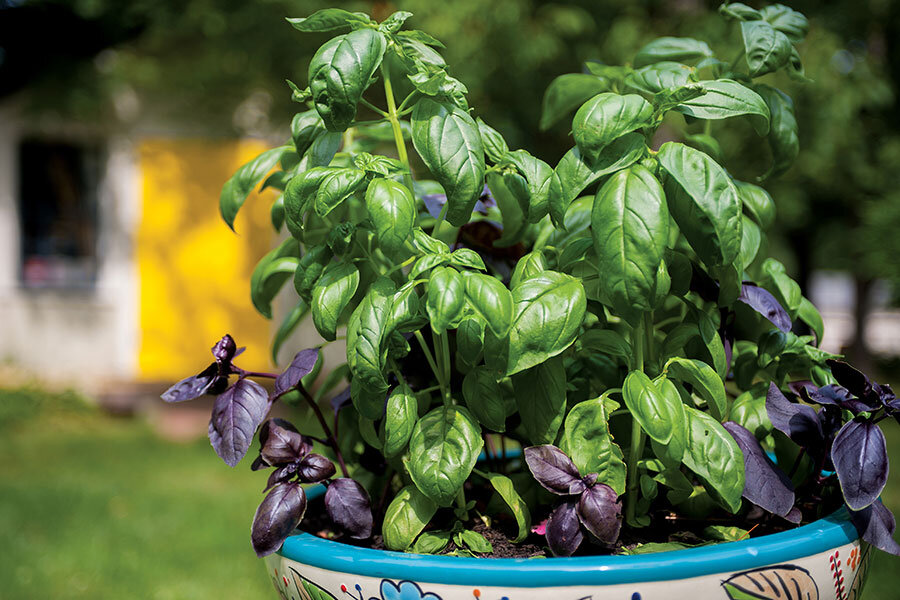Not too late for basil
Loading...
Ah, the sweet smell of basil! If aroma were its only attribute, basil would be worth growing. But gardeners and gourmets know this king of the American herb garden offers much more.
Basil is a member of the mint family and most likely originated in tropical Asia. The first written history of the herb goes back 4,000 years to Egypt. While many ancient Greeks thought the fragrant leaves were cursed, Romans associated basil with love and devotion. It was believed that if a man accepted a sprig of basil from a woman, he would love her forever.
Even though summer is in full swing, there is still plenty of time to plant a variety of basils to liven up summer recipes (see below), provide the essential ingredient for delicious pesto, and add touches of color throughout the landscape.
Although they grow as perennials in their native land, basils are considered annuals in most areas of the United States. They are not hardy and will turn black after a hard frost.
The herb’s tropical origins dictate where it grows best: a warm sunny location where plenty of moisture is available. Basils require at least four hours of sun daily and a minimum of an inch of water per week. They prefer rich, well-drained soil.
Basils grow quickly and are heavy feeders, so give them a dose of liquid fertilizer twice a month. Pinch back the top of the tender stems to encourage a bushier plant. Keep an eye out for flowers, and prune them immediately to promote new leaf growth.
If you don’t have room to plant basils outdoors, or if you live where summer evenings are cool, try growing them in clay pots. Basil is one of the few flowering herbs traditionally raised as a potted plant. Gardeners in England often present guests with a gift of basil as a symbol of good wishes.
Many gardeners are familiar with the popular culinary basils including Genoa Green and Genovese. They are two of the best selections for pesto, but consider these, too:
Cinnamon basil has dark green, distinctively veined foliage and a spicy aroma with a hint of cinnamon.
Lemon basil has bright green leaves that are wonderful in salads, stir fries, and iced tea.
Spicy globe basil is a dwarf hybrid loved for its spicy aroma, flavor, and bushy appearance. It’s excellent for edgings.
The close of the season doesn’t mean the end of a good thing. Most basils root easily in water, so you can extend your harvest. Place cuttings in a small jar or paper cup on a sunny windowsill. Be sure to change the water daily to avoid stem rot, and then pot them before the roots get too long.
Serve with a crisp salad for a perfect summer meal.
Lynn's tomato and basil tart
1 refrigerated pie crust
8 ounces shredded mozzarella
At least 10 fresh basil leaves, chopped
Pinch of dried oregano
3 or 4 ripe tomatoes, sliced
1 tablespoon olive oil
PREPARATION:
Preheat oven to 400 degrees F. Place pie crust in a shallow 10-inch tart pan (see package directions). Prick bottom and sides generously with a fork. Bake for 5 to 10 minutes until crust is light brown. Sprinkle cheese on cooled pastry; top with most of the basil and a pinch of oregano. Arrange tomato slices on top, and drizzle with olive oil. Bake at 400 degrees F. for 35 to 45 minutes. Keep a close eye on it for those last 10 minutes. Sprinkle with remaining basil.





